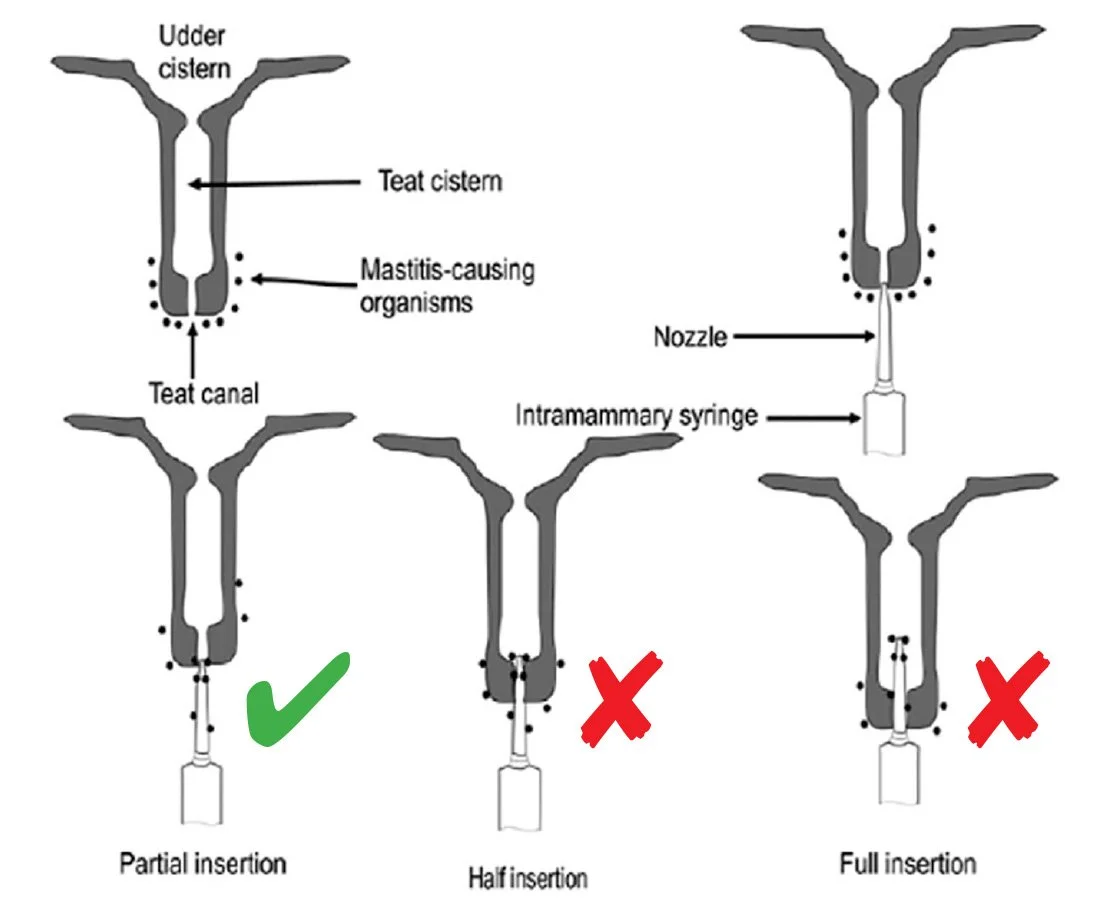Increasing mastitis cure rates
Recently we have done a reasonable amount of work with some of our farmers about the correct antibiotic to use to treat clinical mastitis during spring and further into lactation. As we have been having these discussions with clients we have become aware of some common themes that we should share with all our clients.
Cleaning of the teat end prior to insertion
The teat is NOT clean after removing the cups and needs to be properly cleaned with teat wipes (See diagram). Recent research has shown that 11% of cows treated for mastitis will develop a new infection with a different bacteria immediately after treatment with an intramammary product. This comes down to introduction by the nozzle, and most of the common antibiotics will not treat E. coli or other faecal type bacteria. Hygiene is essential!
Partial insertion of the nozzle
Only 2-3mm of the end of the antibiotic tube needs to be inserted through the opening at the end of the teat. Pushing the whole nozzle in can cause damage to the very sensitive lining of the teat as well as potentially introducing bacteria high up into the gland.
Spraying with teat spray immediately after finishing with the application of antibiotics
This decreases the chance that a bacteria at the teat end can migrate into the opening.
Follow the whole treatment regime
Check with your staff that cows are getting the whole course of treatment. A white board with columns for Cow ID, Quarter, Treatment Type, and tick boxes for the 3 or more treatments can help with this.
Take samples of “Treatment Failures”
If you do not use an on-farm milk culture machine routinely it is good practice to take a milk sample before starting any antibiotic therapy and storing the sample in the fridge just in case the initial treatment is not effective. Before starting another round of antibiotics, submit a milk sample to the clinic for further advice. Our mastitis testing machine which can identify the bacteria and indicate appropriate antibiotic recommendations – all within 24 hours.”
Ask any of our vets for advice
We will be more than willing to sit down with you and give you some personalised advice for your herd.


